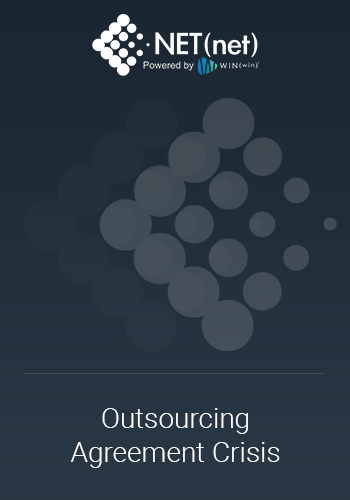The Internet of Things ( IoT). Disruptive Technology. Market Disrupting Suppliers. Strategic Supplier Sourcing.
Have you been hearing a lot about these terms within your organization while sitting in I.T. meetings and in line at the local Starbucks? Are you already seeing that shift in some technology spend to marketing and other digitally enabled parts of the business? Have your teams looked into investing more in technologies that would challenge the status quo, but in the end just go with what’s comfortable? Have your tier one technology suppliers filled you with enough fear, uncertainty and doubt around disruptive technology that you now feel unable to move on it?
Don’t worry – if you’ve answered yes to any of these questions, you’re not alone.
The truth of the matter is most IT organizations don’t even talk a good game when it comes to using or even looking at market disrupting technologies in their strategic supplier management methodology, and by extension the companies that innovate them. A vast majority of companies have not changed the way in which they approach the process, people, or even the suppliers themselves, in how they source technology. This immediately misses the point of capturing more value and driving down cost with a dynamic new technology. In a very near future where almost every object in your enterprise has an ‘internet voice’ (the IoT), the companies that employ the right disruptive technologies first, may gain the most.
Here are 7 ways you can ensure your teams are asking the right questions of themselves, the suppliers, and the market:
1. Start asking questions based on the technology you want – not the technology you have.
If you frame your questions based on technology that one of the ‘big’ suppliers is already selling you - or told you they can sell you – then expect the kind of answer another big supplier will give you. Instead, ask questions based on what your business is looking to accomplish or achieve through the use of technology. If you don’t have several questions that seek things you currently don’t do or can’t do, then you’re about to recreate the past - just with a different wrapper.
2. Don’t force a market disruptor to ‘act like a big’.
All too often we are biased in the way we execute a technology search and or an RFP, we don’t even realize by our own process we’re forcing a potentially great supplier into being something they weren’t meant to be. Not everyone can or should be Oracle – why make them act that way?
3. Scrutinize your company’s market differentiators and capitalize.
Spend more time understanding the things that make your company different, that separate it from the herd. Know what you can build on that will only enhance that position in the market. Once you have the formula, focus on disruptive tech companies that will help you grow, and allow the supplier to grow with you which is a win-win scenario for both. In addition, this will have the ‘intended’ consequence of forcing your ‘big’ suppliers to sit up and take notice that you have options.
4. If it doesn’t make you different, stop acting like it does.
Many organizations spend far too much time and resources on parts of the business that are NOT unique and DON’T enhance the value of what makes them better than the competition. If it’s not different, embrace ‘off the shelf’ industry standards and best practices. Why customize and pay for special features, functionalities, and services from a supplier that add no incremental value to the company? Save the drama and expense for where it matters (see #3).
5. More bullets – less bombs.
The big suppliers love to throw ‘capability bombs’ at you – and want to be all things to all people. If your business problem can be solved with a well-placed bullet, then why buy the bomb? 99% of market disrupting companies can solve that business problem without forcing you to take on an overhead of technology you’ll never need or use.
6. Supplier Gymnastics….in the library.
If you let suppliers jump around and tell you what you need, what comes out of that really, is what suppliers want to sell. Don’t let them be your research library. Know what your business problems are that need to be solved, understand at a high level the technology needed to support those issues, and let the supplier come to you with how THEY will solve the problem. Market disruptors typically excel at this.
7. Most market disrupting companies want to be the big – remind them of their place.
Many smaller, new supplier companies are so focused on trying to act big, they’ve not embraced their role as a market disruptor or don’t know it’s the role you need them to play. Don’t be afraid to let them know what that role is in your process, and why it’s important. If you ask most of them, “Do you want to take a piece of my business away from SAP, or do you want nothing?” We all know what the answer is going to be (it’s a piece by the way – they really, probably will want a piece).
At the end of the day, smaller companies are more willing to invest in a client. They’re more apt to customize and standardize a solution to address your business driver or need. Disruptive suppliers are going to be more willing to work with you on a point of integration with a third party and will likely only ask that you allow them to reuse that integration in exchange for doing it at no cost to you. Innovative suppliers can ‘spin up’ solutions typically in factors of 10 faster than any large supplier. A market disruptor can take that differentiator that gives your company a competitive advantage, and help you build on it in a way that works for you, unlike almost any other behemoth supplier.
For that however, you have to be a leader, resist the ‘big’ bandwagon, and ‘walk the walk.’
NET(net)’s Website/Blogs/Articles and other content is subject to NET(net)’s legal terms offered for general information purposes only, and while NET(net) may offer views and opinions regarding the subject matter, such views and opinions are not intended to malign or disparage any other company or other individual or group.


















